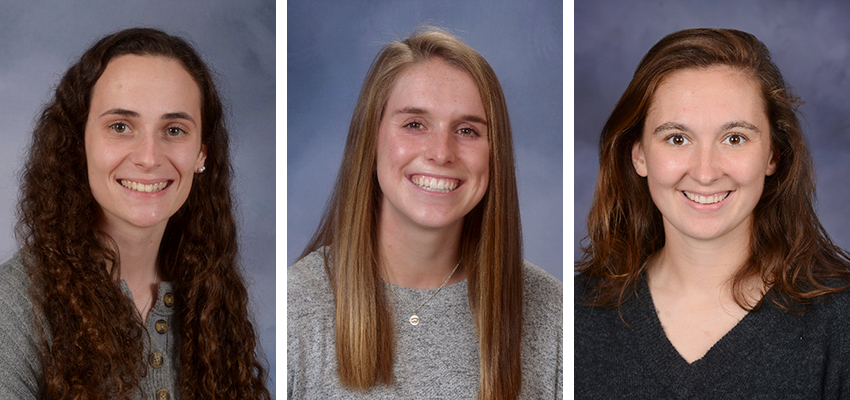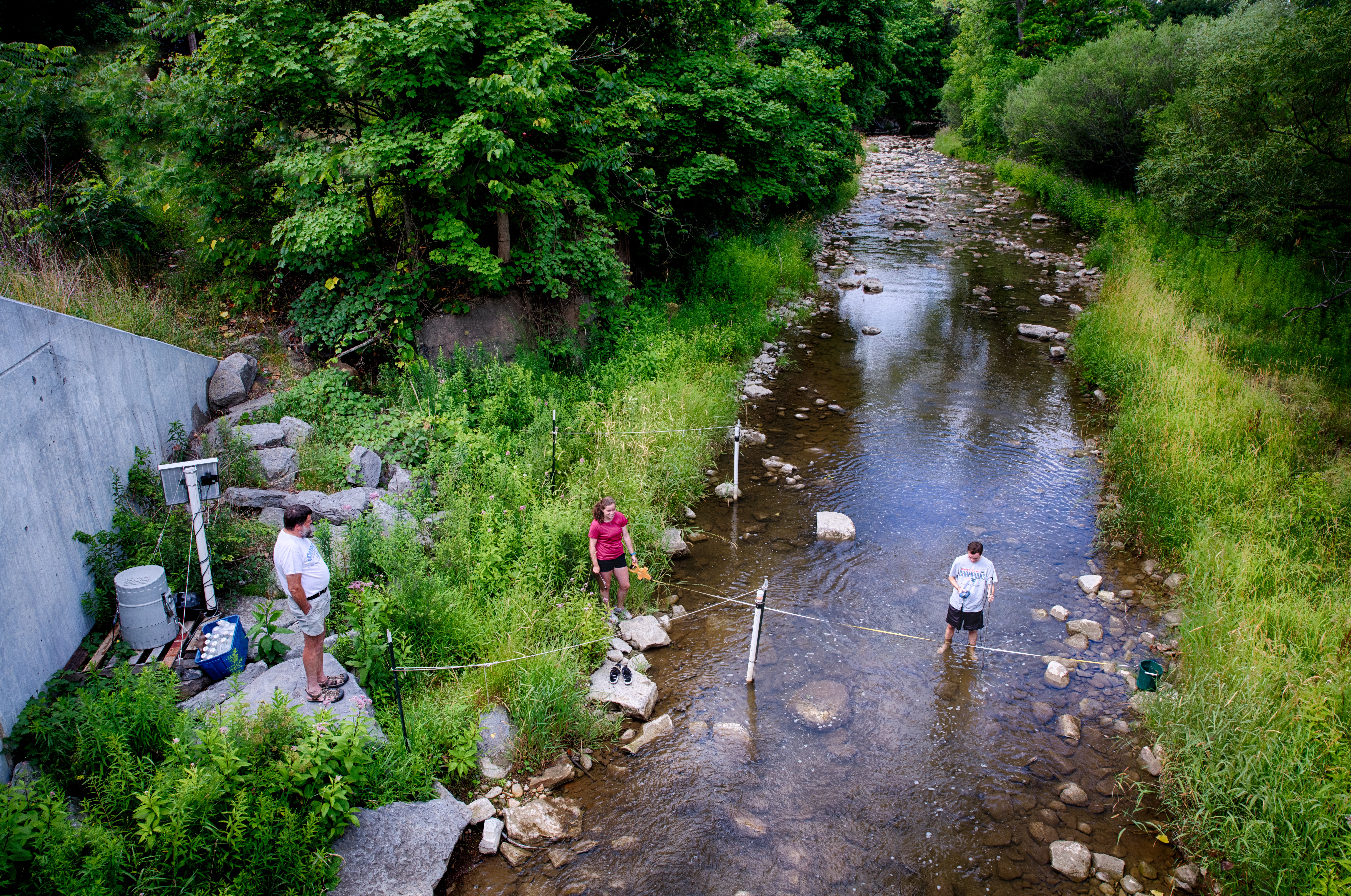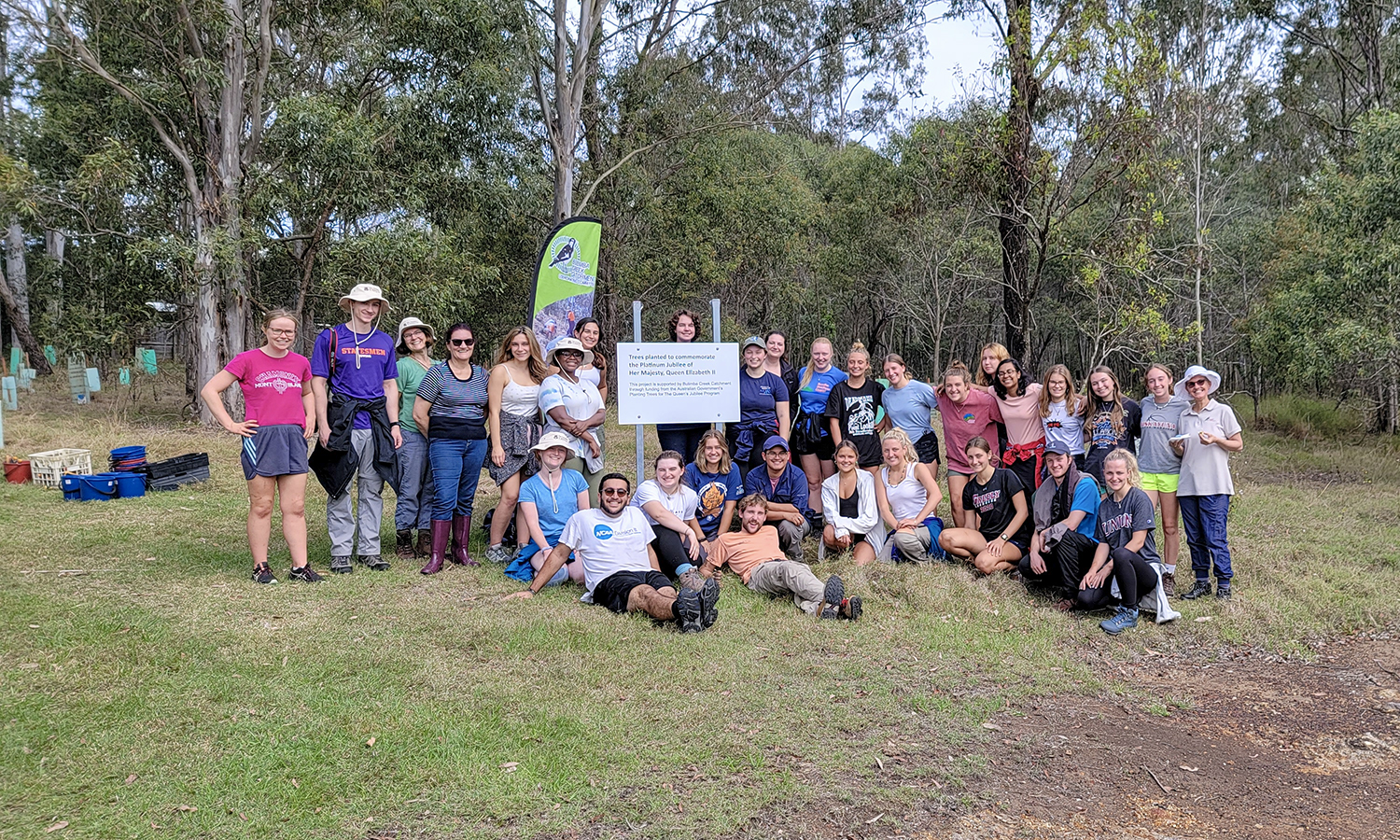
HWS News
23 May 2022 Presenting Finger Lakes Fieldwork
Under the guidance of Professor of Biology Meghan Brown, Associate Professor of Environmental Studies Kristen Brubaker and Associate Professor of Biology Brad Cosentino, three seniors presented the results of their biology and environmental studies research at the Northeast Natural History Conference in Albany, N.Y.
Anna Rider ’22, a biology and environmental studies double major, examined the effects of historic agricultural land use on the population of stream salamanders in the Finger Lakes National Forest. She collected salamanders at 72 stream sites as part of her project, which found a significant correlation between forest age and salamander population; the project also revealed that streams that had been used more recently for agriculture had lower populations. There was also a correlation between crayfish and stream salamander abundance, as the streams in which crayfish were detected had higher numbers of salamanders.
The project “has given me exposure to formal scientific writing and the technical skills that go along with it, such as GIS and coding languages,” Rider says. “Doing research also gave me the ability to combine what I have learned in my courses at HWS and apply that to a real research project.”
Brown says that “designing and executing the methods to test a research question is an integral part of understanding the natural world, and an important step in the independence of students. This type of research involves problem-solving and an appreciation for the behind-the-scenes aspects of being a field biologist.”
Brubaker says the conference offers students “valuable experience in networking and…how to interact professionally with other scientists working on similar research questions.… It was also a great opportunity for the students to be able to interact with their professors in a more informal manner and support one another in their work.”
With her independent study in environmental studies, Janne Kneike ’22 underscored how climate change is affecting the Great Lakes. A geoscience and environmental studies double major, she investigated lake-level conditions and the resulting geographic impacts to the Lake Huron shoreline, focusing on islands in the Manitoulin and Tobermory regions adjacent to Georgian Bay. The results of her project provide critical information for coastal ecology and human communities as climate shifts in the Great Lakes, which have more coastline than the U.S. Atlantic coast, the continental Pacific coast and the Gulf of Mexico.
“Thus,” Kneike concluded, “the Great Lakes provide an ideal study system to better understand biogeographical changes to large, complex hydrological systems.”
Biology major Sarah Gray ’22 says her independent study in biology “was an amazing experience that allowed me to conduct field and lab work, create and finish an entire experiment and work alongside our fabulous staff.”
For her project, Gray selected several locations between the headwaters of the Glenwood Cemetery Creek and its outflow in Seneca Lake to study the surrounding forest. Focusing specifically on leaf-litter decomposition and net changes in elemental concentration of Shagbark Hickory and White Oak trees, she says her findings provide information about the terrestrial-to-lake flow of nutrients and detritus-based habitats for microorganisms and macroinvertebrates. These results may assist the development of the Colleges’ management plan for the campus forest, Coopers’ Woods.
Gray adds that the project “gave me an immense amount of confidence before going into the ‘real world.’… I got a taste of all the things someone could do with their research and absolutely loved networking with new people from all different areas.”
The photo above features Anna Rider ’22, Sarah Gray ’22 and Janne Kneike ’22 (L to R).



